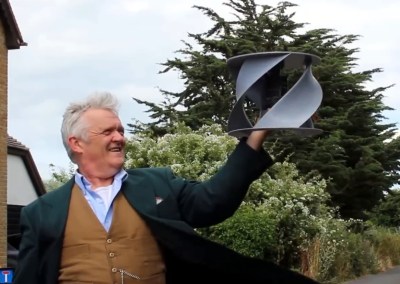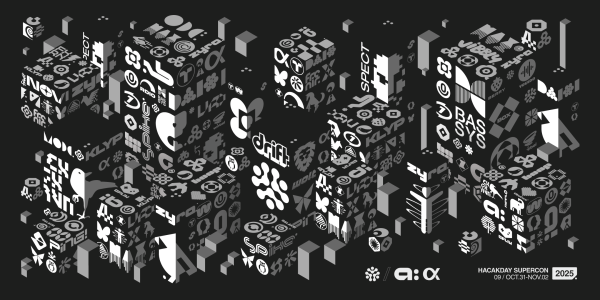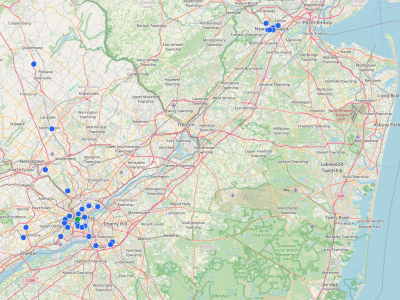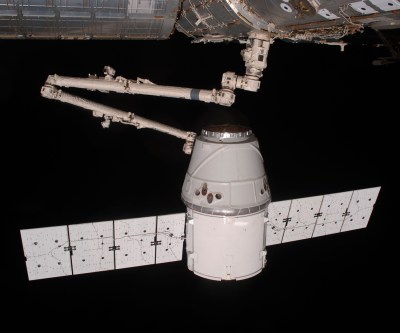We at Hackaday are deeply saddened to learn of the passing of Robert Murray-Smith. The prolific experimenter had spent over a decade on YouTube, creating more than 2,500 videos where he gleefully demonstrated his seemingly endless collection of homemade contraptions. At least eighteen of which ended up on the pages of Hackaday since we first crossed paths with him back in 2013.
Like many of you, we were also shocked to find that Robert made the decision to end his own life. As cliché as it might sound, he simply didn’t seem like the type. His demeanor was always boisterous in his videos, exhibiting an almost child-like joy as he showed off his latest creation with a laugh and smile.
 But as explained by his brother Dave in the brief announcement video posted yesterday, his outward appearance was a well-rehearsed mask that covered a deepening depression. Regular viewers of Robert’s videos knew he lost his wife, as he shared a memorial video for her in April of 2024. What he was less open about with his viewers was his own health, which it turns out had been rapidly declining for the last few months.
But as explained by his brother Dave in the brief announcement video posted yesterday, his outward appearance was a well-rehearsed mask that covered a deepening depression. Regular viewers of Robert’s videos knew he lost his wife, as he shared a memorial video for her in April of 2024. What he was less open about with his viewers was his own health, which it turns out had been rapidly declining for the last few months.
We now know that simply getting up and walking around had become painful for Robert, a fact obscured by the fact that most of his videos saw him seated at his workbench or in the back garden. That he was able to continue making so many videos at all speaks not only to his passion for technology and engineering, but the great love he had for the community that he’d built.
From the video we also learned that Robert found it very difficult to discuss his declining mental and physical health with friends and family. For men of his generation, the “strong and silent type” was often the ideal. Given all that he was going through, nobody could fault him for experiencing a sense of hopelessness, and yet his brother explains that Robert would never admit to the difficulties he was facing. Whenever pushed to talk about his feelings, he’d respond with that phrase which we’ve all heard (and maybe used once or twice) — “I’m fine.”
Because of this, Robert’s family has partnered with the suicide prevention charity CALM (Campaign Against Living Miserably) to try and raise awareness about men’s mental health. They ask that anyone who wishes to honor Robert make a donation to CALM, in the hopes that they can help others who may find themselves in a similar situation.
It’s no great secret that many in the hacker and maker communities face their own daily struggles. Whether it’s from being neurodivergent, or the inability to fit in with mainstream society. Several of the staff here at Hackaday are from marginalized groups, and even among those who aren’t, let’s just say we have it on good authority that most of them didn’t get to sit with the “cool kids” back in high school. We also know that, just like Robert, many in the community find it difficult to communicate with others about how this impacts their mental health.
The lasting legacy of Robert Murray-Smith will of course be his incredible body of work, which will continue to inspire millions of viewers. But we can also honor him by making sure that we’re looking out for the well-being of friends, family, and even ourselves. There are resources available, and there’s no shame in asking for help when you need it.
Continue reading “Honoring The Legacy Of Robert Murray-Smith” →
 Luckily for hackers living in the Philadelphia area, the folks behind JawnCon have once again demonstrated they’re able to thread the needle. While the ticket price remained the same as in 2024, this year an additional track of talks was introduced as well as expanded activities throughout the con. Even though it only wrapped this past weekend, there’s already buzz about what the event will look like in 2026.
Luckily for hackers living in the Philadelphia area, the folks behind JawnCon have once again demonstrated they’re able to thread the needle. While the ticket price remained the same as in 2024, this year an additional track of talks was introduced as well as expanded activities throughout the con. Even though it only wrapped this past weekend, there’s already buzz about what the event will look like in 2026.




















